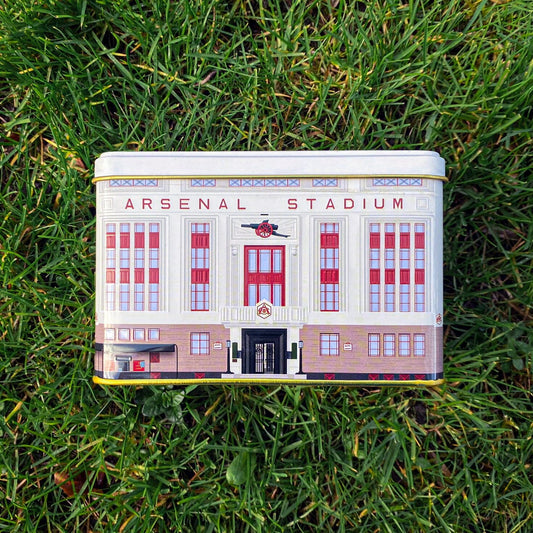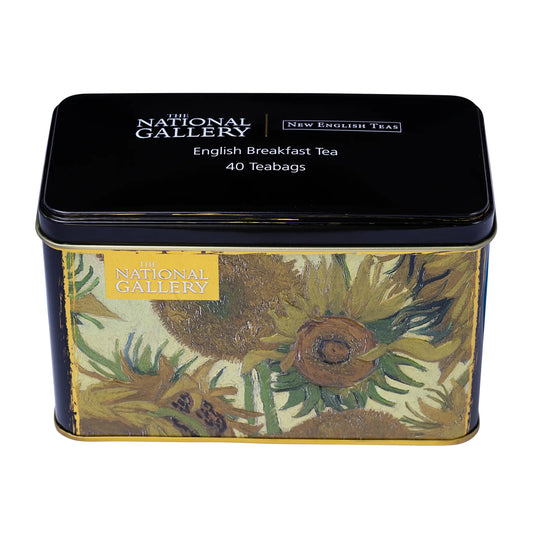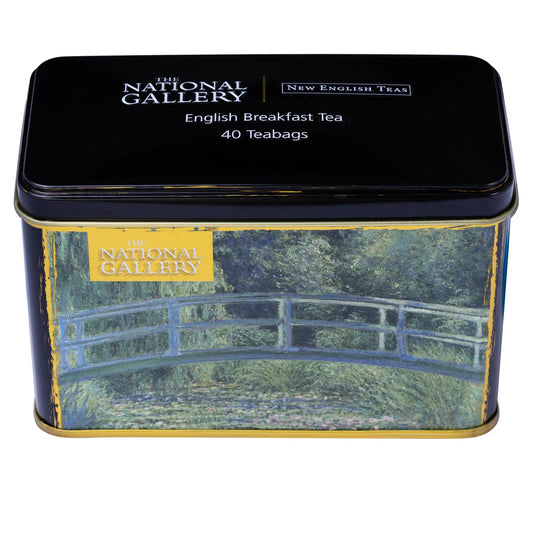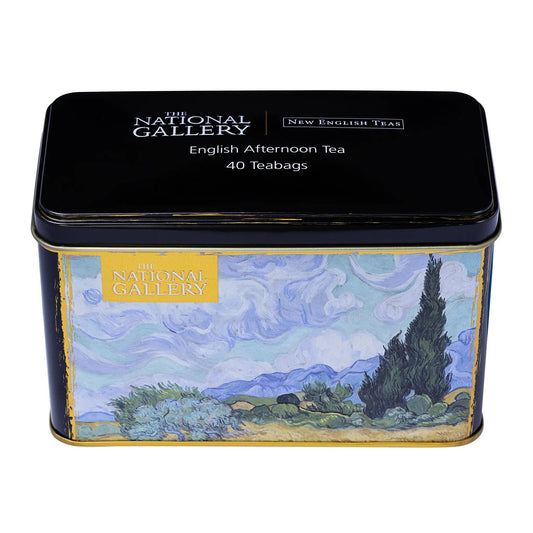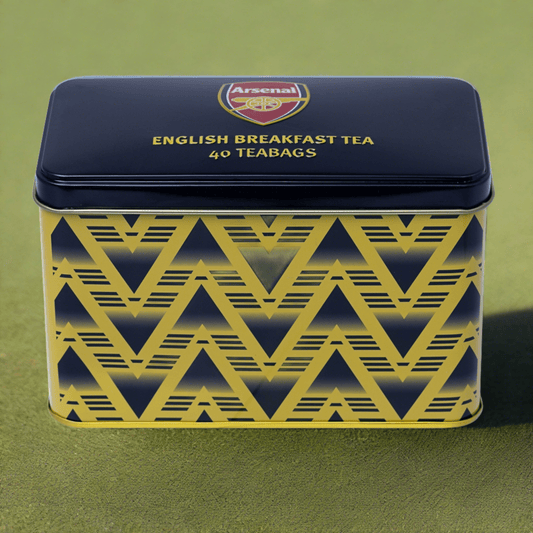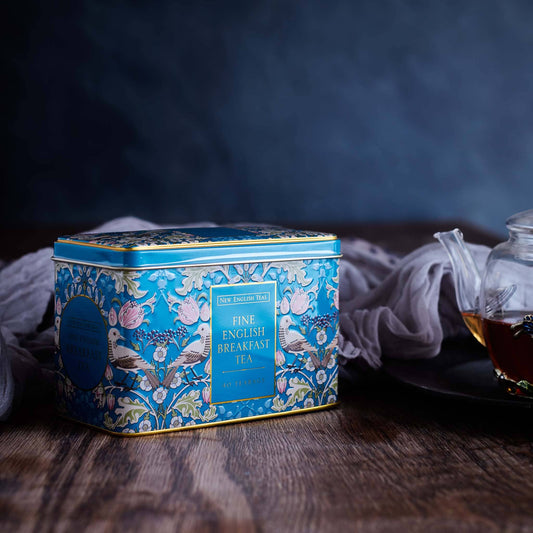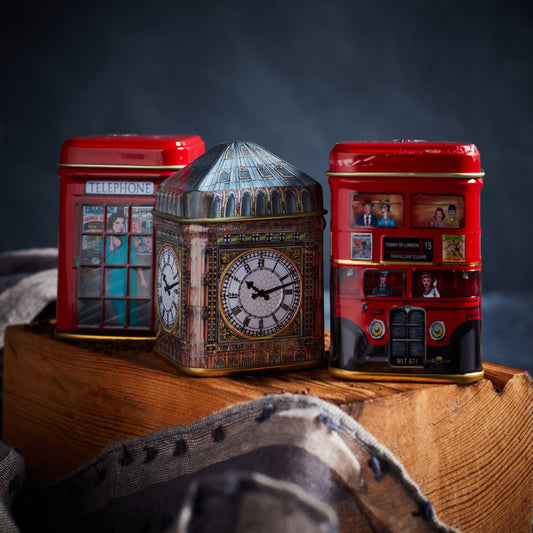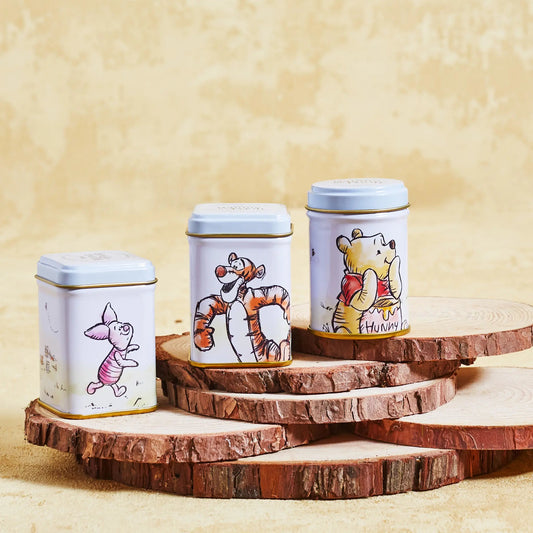People from all over the world drink tea in many different ways for different reasons. When it comes to tea, every country has its own unique traditions, preparation methods, and blends. This blog post explores different tea traditions from across the globe and how tea is enjoyed around the world.
UK
In the UK, tea is synonymous with British culture. The UK is one of the largest drinkers of tea in the world and, as a nation, we get through a whopping 160 million cups of tea per day, our favourites being black teas like English Breakfast.
Tea was first introduced to the UK in the mid-1600s by the Dutch East India Company, but it wasn’t until the 19th century that the afternoon tea trend really took off. This tradition was started in 1840 by Anna, 7th Duchess of Bedford, who found that the standard 2 meals per day with breakfast at around midday and dinner at around 8pm, left her hungry. The breakfast-dinner gap was too large, and so she asked her staff to prepare a smaller, lighter meal at around 4pm, which consisted of an assortment of cakes and sandwiches with tea.
And so, afternoon tea was born, and it spread across the country, inspiring tea gardens, in which customers could enjoy tea and cake amongst beautiful flowers and plants. Today, this tradition is more popular than ever and afternoon tea is enjoyed by everyone across the UK, as friends and family gather to enjoy sandwiches, scones, cakes, and, of course, tea.
RUSSIA
Trade along the Silk Road brought tea to Russia in the 17th century, and by the 1800s it was available to everyone. Tea in Russia is traditionally made in a samovar, a tall, ornate, decorative urn or container that holds boiled water. On top of the samovar sits a teapot which contains very strong, highly concentrated, powerful loose-leaf black tea called zavarka.
To serve the tea, a small amount of zavarka is poured into a tea cup and diluted with hot water from the samovar poured to the desired amount to determine the strength of the tea. The tea is typically taken black but can be flavoured with lemon, sugar, honey, or milk and an accompanying snack.
The samovar is a staple in Russia households, and it is considered polite to offer a guest a cup to offer your hospitality, and rude not to offer a cup to a guest.
MOROCCO
Morocco’s tea staple is a mint tea known as Touareg and is vital to Moroccan hospitality and an essential part of their culture. Touareg is a green tea brewed with mint leaves and sugar and is very rude to refuse it if it is offered to you as it is an important display of hospitality to welcome guests.
The tea is poured from high above into tall, slim glasses over 3 servings, each with a unique flavour. With each serving, the drinker reflects on life, love, and death per the Moroccan proverb - the first glass is as ‘gentle as life’, the second is as ‘strong as love’, and the third is as ‘bitter as death’. It is polite to drink all 3 cups and is often accompanied by spiced nuts and fruit pastries.
JAPAN
Tea is an important part of Japanese culture. The Japanese take part in tea ceremonies called Chado, or Chanoyu, which means ‘way of tea’. Influenced by Zen Buddhism, the traditional, spiritual tea ceremony is carried out in a teahouse and involves ritualised preparation, presentation, and consumption of matcha tea.
The matcha is dried and ground into a fine green powder and brewed into a delicate, fragrant tea. It can take years to learn, master and perfect the carefully choreographed ceremony, each one taking several hours to enjoy. Every ceremony focuses on the ideals of harmony, respect, tranquillity, connection, and appreciating the moment.
CHINA
Tea is an integral part of everyday life in China. China was the first country to discover tea and the country’s diverse climate is the perfect environment for growing a wealth of different teas including oolong, jasmine, and pu-erh.
Cha Dao translates as the ‘way of tea’, and describes the Chinese art of making tea. Cha Dao is inspired by Daoism and the Chinese philosophies of harmony, balance, fulfilment, and enjoyment. The practice and art of serving tea is ritualised in the traditional Gongfu tea ceremony.
The ceremony is a detailed process and is carried out by a tea master who prepares tea for a group of people. There is much equipment required for the ceremony, including a tureen, strainers, tongs, tea towels, and scent cups.
There are many intricate steps to the ceremony, including smelling the leaves, demonstrating a variety of styles of pouring tea and arranging cups, and slowly sipping and savouring the flavour and aroma of the tea.
INDIA
Tea is one of the most popular drinks in India and India is one of the largest producers and consumers of tea in the world. The most popular tea in India is their national drink, Chai, which is a loose-leaf black tea combined with milk and infused with spices such as ginger, cinnamon, cardamom, nutmeg, cloves, and pepper which give it a sweet and spicy flavour and aroma.
Chai is drunk on-the-go, is offered to guests, and is drunk during meals. Chai is so popular that it is sold on every street corner in India by Chai sellers known as Chaiwallahs. Chaiwallers sell their delicious brew on tea stalls on Indian streets and not only is it a place to drink your favourite beverage, but an important place in the community at which to socialise, catch up on news, and gossip with neighbours.
THAILAND
Thailand is most well known for its Thai iced tea, cha-yen. Cha-yen is made from strong brewed Ceylon or Assam black tea blended with condensed milk and sugar. Aromatic flavours and spices are added including orange blossom, star anise, tamarind, and cinnamon to give it a sweet, spicy and floral taste with a liquorice aroma. It is then served over ice in a tall glass.
Cha-yen is served in Thai restaurants as its unique flavour wonderfully complements the country’s cuisine and is also the perfect refreshing beverage to cool down in the hot Thai weather.
Tea is truly universal for all countries across the globe. So wherever you find yourself in the world, you are sure to enjoy a delicious brew with a cuppa waiting just for you. What’s your favourite tea tradition? How do you like to drink your tea? Let us know in the comments below.

